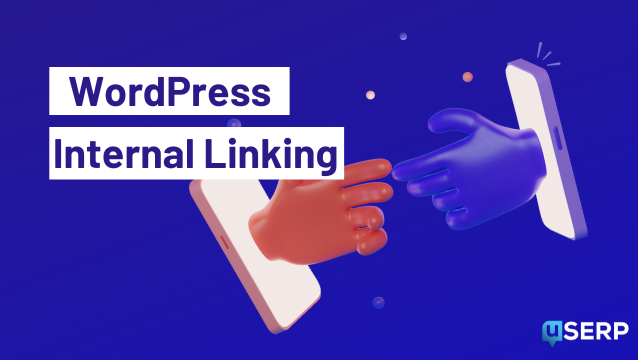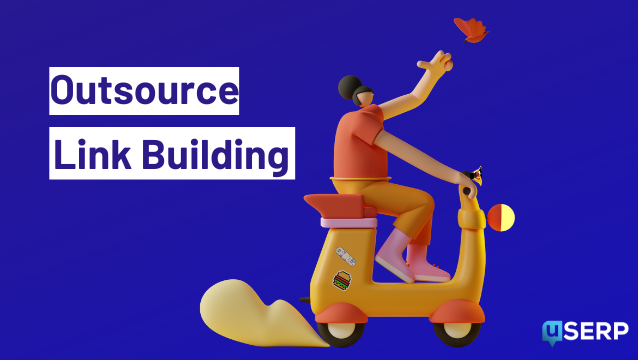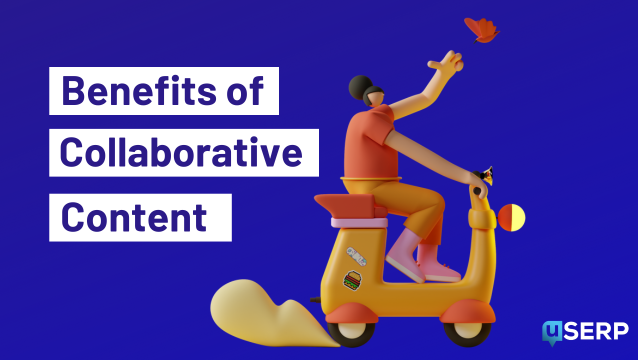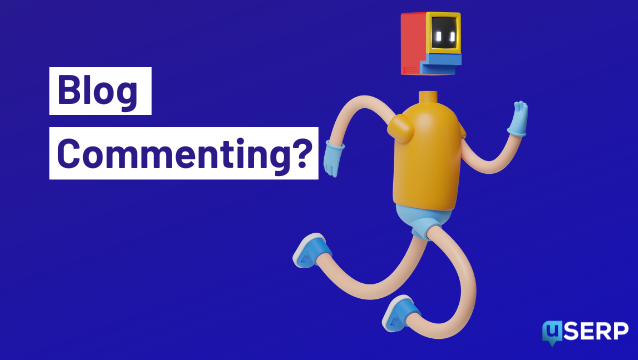Creating content is one of the best ways to drive backlinks to your site and increase your search rankings, resulting in higher organic traffic.
However, it’s a matter of creating content that cuts through the clutter.
With thousands – if not MILLIONS – of pages vying for attention nowadays, it’s much harder to attract links from your content no matter how good it may be.
In this post, we’ll discuss the process of deliberately creating content designed to help you build backlinks.
Determine the Type of Content Your Audience Loves
First, you must know what content type resonates the most with your audience.
Different factors affect the content preferences of people. Therefore, just because a certain type of content works for a specific audience, doesn’t mean the same applies to audiences in different niches.
Below are variables to consider so you know what type of content to plot out for your site:
Pain points
In your niche, your audience will have encountered issues and problems on how to do certain things.
In other words:
You must find out the most pressing issue and create content that answers all their concerns regarding that matter.
To identify which pain point to heal, you need to search for questions on Quora and forum sites like Reddit to find the most common questions asked by users that don’t have a clear or well-defined answer.
This is an opportunity for you to fill the gap with your unique content. This also has the highest likelihood of getting backlinks because it’s the best page that provides a conclusive answer that eluded people in your niche.
You can also do the opposite by compiling ALL the answers you can find about a question and create a curated post about the topic.
There are more ways to determine legitimate pain points in your niche. But for now, the process I explained to you above should be okay.
Format
The presentation of your content matters. If the majority of your audience takes the commute from going to work and back, expect them to listen to podcasts instead of reading blog posts while traveling. Long in-depth guides with lots of screenshots are best if people are looking for a way to get something done the way it should be.
Regarding format, we want to ensure the usability of the content. Nobody wants to link out to content that serves little to no purpose to its audience.
So if your content format doesn’t align with the convenience of your audience, then it won’t succeed.
Below is a rundown of different formats you can use for your content and when they’re used the best:
- Guides – How-to articles complete with images and text are perfect for people who want to get something done quickly and easily.
- Infographics – Images not only attract more backlinks but are also shared more across social media, giving you that extra help in getting more eyeballs to your content.
- Videos – These are much harder to produce because you need good equipment to record and publish a well-produced, high-quality video. However, if pulled off, videos can come off much better than written guides due to their audio and visual components, making information much easier to digest.
- Interactive – Charts and interactive maps put your audience at the forefront of the content. Excel Charts and interactive maps put your audience at the forefront of the content. It engages them in more meaningful ways instead of just having them read or watch your content.
- Case studies – Running tests to draw conclusive data about a topic is a great way to build authority and credibility in your space. Also, if the case study is pretty unique in your industry, you can expect to draw more backlinks to it.
Sentiment
Another way of finding out what people think of a piece of content is by analyzing what people think about it.
Sentiment analysis refers to the quality of engagement with content, not quantity. Because it’s one thing to have lots of shares and mentions about a post, and another to know if the majority of those mentions are positive or negative.
You want to create content that elicits a positive response from your audience as it’s easier to spread your message that leads off with positivity.
Research Most Linked Content of Competitors
To build off from the type of link-worthy content you should create for your site, you also must look at how your top competitors craft their content. In particular:
Find competitor backlinks by looking at their pages with the most referring domains.
To do this, you’d need a backlink research tool like Ahrefs to identify pages with the most referring domains and conduct a backlink analysis. From here, you must determine the most authoritative domains from the bunch.
Ahrefs has the Domain Rating (DR) that scores domains based on the backlinks it has. The better the backlinks, the higher the DR.
From, you want to see WHY they got lots of links to these pages. Maybe the page is tackling a topic that hasn’t been discussed before. Or the content format is conducive for sharing and linking.
Or the site owner probably launched an outreach campaign to generate interest in the content and drive more backlinks to it.
Use the information you find here to refine the clink-worthy content you need to create for your site.
Optimize Your Content for SEO
When we’re talking about SEO, we’re referring to creating content that search engines and your audience would love.
Gone are the days when you have to game the algorithm by stuffing keywords and spamming your site for backlinks. That may get your site on top of SERPs, but it radically compromises the quality of your content to the point that it becomes READABLE.
To satisfy both parties, you need to observe the following:
- Find the best keyword to optimize for your content. Ideally, long-tail keywords are where the money’s at due to their intent and low difficulty, i.e. easier to rank.
- Include your chosen keyword in the page’s URL, SEO title, H1 title, and mention it in the body at least once.
- Use keywords similar to your target keywords as the content’s subheadings (H2, H3, etc.).
- Images are a welcome change of pace for your content because they help break the monotony of text on the page. You can also help Google crawl your page much easier if you use proper naming conventions on your images.
- Shoot for between 1,000-1,500 words for your content. It could go longer or shorter depending on the topics you need to discuss in it but the word count range mentioned is the sweet spot.
The points above round out the quick and dirty approach of getting your article to rank on Google.
You can get more scientific with your content creation approach by using tools like PageOptimizer Pro or Surfer SEO to gain more insights about your competitors and create content using the gathered data. This is preferable but you can also do the steps above to help you get started.
Make It Easy to Link to Your Page
The goal here is to encourage people to feature your image on their site by asking them to link back to your site.
To do this, you must have a unique image or infographic as part of your content.
Once you have it on the page, generate an infographic embed code using FATJOE.
Follow the steps on the page to create the code that you can feature along with the infographic on your page. The code should include a link back to the page where the infographic is found on your site as well as a link to your site.
This way, whenever somebody wants to grab the infographic from your site, they can just copy and paste the code to make the infographic and the backlink to your site appear on their page!
Promote It on Different Channels
The saying, “build it and they will come,” doesn’t always apply in real life, and much less so in SEO.
Even if you create the best content possible about a topic, it won’t generate guaranteed traffic and not just bot traffic. It’s because nobody knows it exists in the first place!
This is a problem most brand-new site owners have to overcome first. Since they don’t have the authority and clout in the industry, they need to put in more effort to get their content out in the open.
Therefore, after publishing your link-worthy content, you need to get your hands dirty with startup marketing by finding ways to inform your target audience about your content.
Below are ways you can do this:
Source: amplifr.com
- Social media scheduling is a critical part of your content marketing strategy. Schedule your content on social media at the best times possible. You can check your preferred scheduling tools to see the times when the majority of your audience is engaging with your posts. It’s even better if you can create multiple posts about the same content for months to help maximize your post’s visibility.
- Add social sharing buttons on the page so readers who enjoyed your content can help spread the word by sharing it on social media.
- Consider leveraging content for your local SEO. If you have a Google My Business, use it to share your content and stay in touch with your customers and prospects.
- If you have an email, send an email blast promoting your latest content. It doesn’t matter how many subscribers you have – just do it! Use great subject lines so that users open your email at first glance.
- Find relevant posts on your site and link to the content you created. By internally linking to your new content from your old posts, you send authority to the new pages and help Google crawl them much quicker.
Doing all these things might be difficult for bootstrapped site owners such as yourself. Therefore, you’re better off using the best marketing tools designed to make this job much easier for you.
Use Content to Reach Out to Influencers
To take your content promotion campaign to greater heights, you need to enlist the help of influencers. These are people held in high regard in your industry to recommend your content to his or her community.
The goal of leveraging the relationships you’ll be building with influencers is to gain the trust of people. And for that to happen, you have to win the trust of this influencer or KOL (key opinion leader) to win everybody else’s.
From here, word-of-mouth marketing takes place. Your content will be read, watched, and heard by more people than ever before, which could exponentially increase the links you’ll receive from it.
Here’s how you can effectively reach out to influencers and get them to trust you:
- Determine genuine mid-tier influencers in your niche using an influencer audit tool. Aiming for high-end influencers is difficult because they’re probably receiving lots of messages from different people and won’t have time to respond to yours. Reaching out to budding influencers with a few thousand followers on social media and email subscribers is your best bet in getting the highest response rate. List down 3-5 influencers that you can feature in your content.
- Wade through his/her blog and find posts that you can link to. Ideally, find a quote that you can use from the piece to use in your content.
- Once the content is published with the links and quotes of influencers included, email or tweet them about your latest post that covers them. The goal here is to deliver value first to gain their trust. A backlink to their post and a mention of their name should achieve that!
Note: Don’t ask for a backlink to your content! Let them decide what to do with it first. Depending on how STRONG your content is, they could either share it on social media or link to it on one of their posts.
To make this campaign even more successful, you’d want to engage with them first in multiple ways. Share or reply to their tweets, comment on their posts, and join their mailing list and reply to their emails if they’re asking questions.
Doing these helps you make an impression on these influencers so that when you reach out to them with your content, they’ll remember you from the things you’ve done. From here, they should be much more responsive to your email!
Repurpose Your Content into Different Formats
As a last hurrah to generate more links from your content, recreate them into different formats.
If you have blog posts, for instance, turn them into infographics using graphic design tools like Canva or Visme. Pick out a template and edit it using quotes and images from your post.
There are various reasons how images can boost your SEO performance, one of them being that they potentially help generate more links for your site.
You can also turn blog posts into podcasts by converting them into audio files like Play.ht for WordPress. This way, you don’t have to record your voice reading the content.
The same goes for other content you created. Turn videos into blog posts or podcasts into infographics.
It’s a matter of diversifying your content and breathing more life into them in the hopes of attracting more people to link out to them!
Conclusion
Creating link-worthy content consistently is possible if you follow the process above. It’s all about developing a scalable content strategy so you can maximize the results you can achieve with each published post, video, image, or even audio!
Also, you must track your progress of link acquisition with a link monitoring tool like Linkody. This will be the barometer where all your content to generate backlinks will be measured.
Finally, you need to take advantage of your content’s newfound fame especially once it starts ranking up high on SERPs for the backlinks you’ve generated. For instance, you can start capturing leads using website popups. This allows you to keep in touch with them even after they leave the page.
- Earn Passive Backlinks: How to Make Your Content Link-Worthy - March 30, 2021









